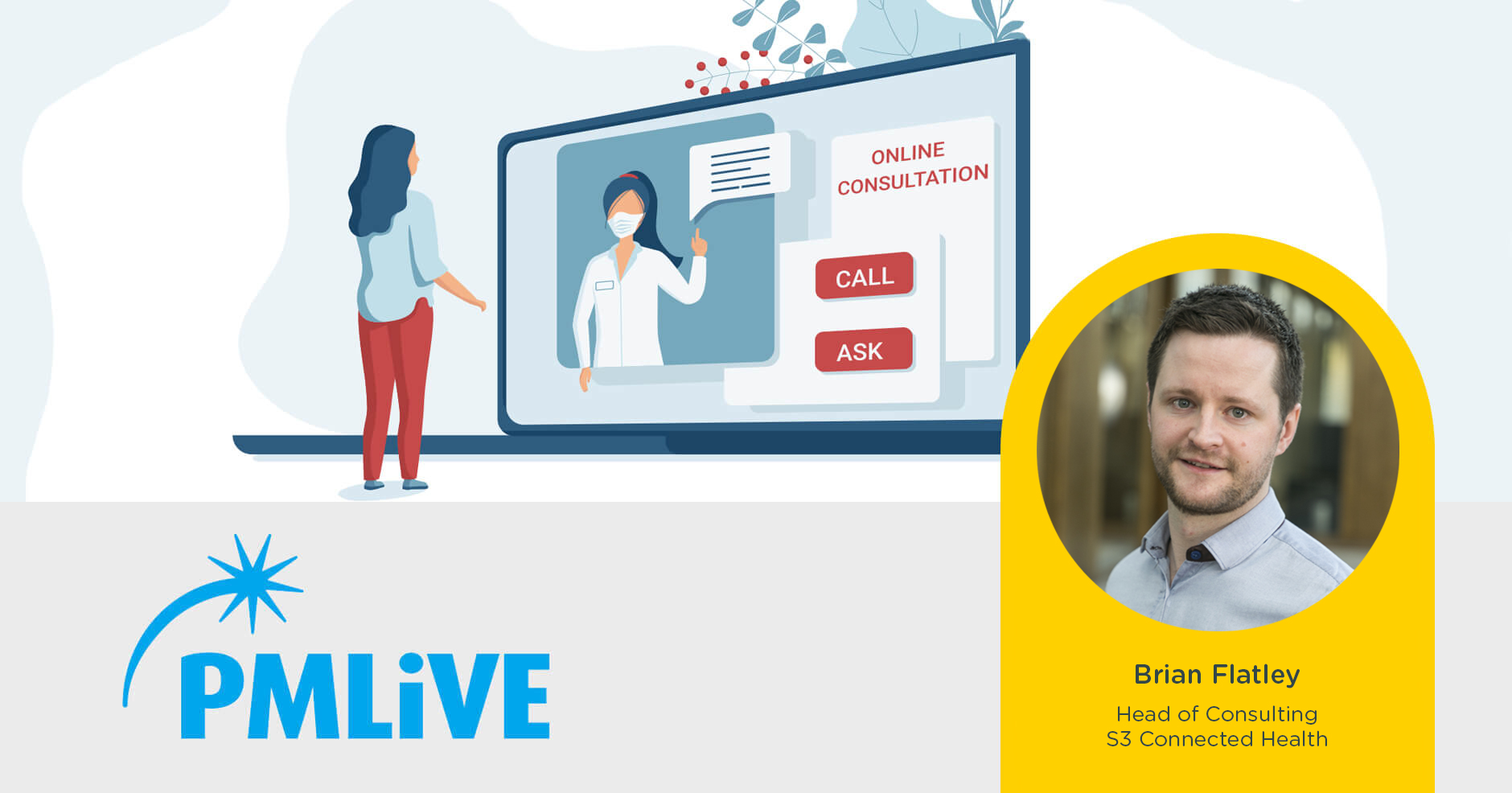The medical world is undergoing a digital revolution. The global digital health sector saw its best first quarter since analysts began tracking its performance a decade ago, logging between $3.1bn and $4.5bn in funding in Q1 2020. Europe, specifically, saw healthtech investment deal sizes increase in 2019, averaging €14m. However you view it, digital solutions are becoming a key component of the pharmaceutical industry’s ability to change and improve lives.
But with every country, region, and locality having its own specific pain points, challenges, and regulations to consider, creating globally relevant solutions means adequately reflecting regional differences.
Not only do solutions need to be designed from inception to address the needs of patients and healthcare providers on an individual scale, they also need to integrate with existing healthcare systems across all countries in which they operate – while staying mindful of the relevant safeguards. (GDPR, for example, has created a ‘gold standard’ for data protection, the implications of which are felt not just in Europe, but globally.)
Creating what we call a ‘core adoptable solution’ (CAS) can help when addressing these concerns. A CAS is essentially a flexible jumping-off point for a given product or solution, which can then be updated and adapted according to feedback on the ground – be that based on regional market requirements or the individual needs of stakeholders. It’s cost effective, allowing developers to tweak and re-use many of the same assets across affiliates for little extra cost, it significantly speeds up the journey to market, and ultimately creates an infrastructure that can be managed centrally, avoiding fragmented datasets and enabling seamless sharing of insights across global teams.
So, how do you create a CAS that can adapt to the needs of different health systems across the globe?
Getting to the heart of low adoption rates
Firstly, to appreciate the wider challenge of creating genuinely flexible solutions, it’s important to understand the nature of adoption.
Adoption is both a short-term and a long-term issue for digital health solutions. For a technology to succeed, it needs to pass the test of initial adoption in the short term and integrate into existing systems in the long term. For patients, it should be something they choose to incorporate into their treatment program; for HCPs and care teams, it needs to produce usable data and slot into existing care pathways. For both groups, it must represent a seamless change that requires little extra time or ‘on-boarding’, and incorporates as much automation as possible.
The need for compatibility with existing care systems means any solution must also be scalable. Small-scale solutions that can’t be easily replicated require massive infrastructure investment, or create impenetrable data streams, are unlikely to be adopted.
Getting these points right is no small task; it requires a deep understanding of both individual and market-specific problems. Gaining that clear understanding requires tapping into patient and HCP experiences on the ground.
Putting patient and HCP needs first
Experience mapping is one way to determine the needs of patients and care providers in their respective geographies and create something that provides value for patients, HCPs, and other stakeholders, wherever they are; driving both usage and adoption.
The exact requirements for a solution will of course differ depending on the stakeholder. For HCPs, for example, solutions should be simple, meaningful, quick to use, easily integratable with existing systems, and fulfill an essential service that is lacking or needs improving.
For patients however, solutions should sustain adoption by going beyond the clinical ‘bare minimum’ and addressing wider issues related to the condition; helping them feel involved and part of their own treatment.
Detecting obstacles in patient behavior
Taking into account emotional and social requirements when creating a CAS is particularly important, as these can be some of the more significant barriers to long-term adoption.
Behavioral science techniques can help here, complementing the experience mapping process and taking into account all the components that drive behavior – including ability and motivation, as well as external factors like social, cultural, and physical opportunities or differences.
Behavioral analysis science also allows pharma companies to identify otherwise unseen barriers to adoption – like unhealthy behaviors or bad habits – and develop relevant solutions to counter them.
The sooner you can uncover these kinds of behavioral insights, the better, as identifying solutions early on will significantly improve the chances of adoption.
What Core Adoptable Solutions look like on the ground
Chronic diseases are just one area where digital health solutions are leveraging techniques like these to provide a better experience for patients.
One example of where we used a CAS is a digital health program, MSDialog, developed for the neurodegenerative condition multiple sclerosis (MS). MS is a life-long condition that affects thousands worldwide; it requires complex treatment and continual healthcare provision. With medication increasingly taken at home rather than in hospital, and side effects often difficult for patients to cope with, both the patient and HCP journeys are fraught with challenges.
The scenario
In this scenario, Merck was looking to enhance adherence management, care coordination, optimize health-related quality of life, and improve overall outcomes in MS patients. That meant the solution needed to be flexible to meet the specific needs of different countries and regions, and also provide real-world evidence and deeper insights to clinicians and the pharma client.
The initial solution
MSDialog was designed to support a large population of patients across multiple territories; providing support for local care protocols and collecting real-world data for the pharma client, payors, and HCPs. Taking the form of a mobile app for patients that connected to a secure server where data could be shared with HCPs, the service also needed to adapt depending on individual market needs and provide training to facilitate local teams in analysing data gathered via the solution.
How on-the-ground experience created a truly flexible CAS
Bringing the initial CAS to market paved the way for a number of market-specific adaptations. Easier to modify than more complex solutions and already set up to collect data that will inform future changes and improvements, the program was designed to ensure maximum benefit in multiple regions.
French affiliates, for example, raised the concern that HCPs were reluctant to use the system due to automatic sharing of their contact details to patients; the solution was to include a contact detail sharing function for HCPs.
In Germany, HCPs wanted the tool to show if patients were also part of other ongoing clinical studies; the solution was to add an additional column to patient lists, indicating whether patients belong to any study.
Another final example shows just how impactful even small tweaks can be to market-specific adoption. Affiliates in both Canada and Saudi Arabia asked that the solution support the registration of patients without an e-mail address.
This is quite common in some markets, for various reasons, but is easily overlooked in others where email is the default formal channel. However, when you consider that markets like China overwhelmingly prefer instant messaging services, integrations with platforms like WeChat instead of email are key. Failing to pivot the solution based on this feedback from the ground could have jeopardised long-term sign-up in markets far beyond just Canada and Saudi Arabia.
The results
The approach provided vital economic and real-world clinical data, facilitating service planning and reconfiguration at both country and regional levels. More than that, it resulted in a clear boost to individual patient and HCP wellbeing.
87% of patients stated that completion of patient-reported outcomes with the program fitted in “fairly” to “extremely well” with their weekly routine. 77% of patients were “extremely” or “very satisfied” with their digital patient support program experience at the end of week six, while 82% considered it better than previous methods for tracking their health, and 95% would recommend using the digital patient support program.
Finally, patients felt the digital patient support program helped them to actively engage in the management of their disease between consultations, as well as during consultations and decision making.
Context is key
Pharma has much to gain from flexible solutions like these.
For any new solution to succeed, it’s crucial to understand the deeper context behind unmet needs as well as nuanced differences on an individual, local, and national basis. Core adoptable solutions allow us to do both – meaning greater chances of adoption, but also more meaningful iteration and improvement that will help demonstrate clinical efficacy.
More than that, core adoptable solutions can also provide significant cost efficiencies for pharma companies, allowing centralized data management and analytics which permit digital assets to be reused and localized across affiliates.
The benefits are significant. Now is the time to start creating genuinely flexible solutions – and provide better solutions for patients and healthcare professionals alike.
Read Brian's full article on page 7 of PMLiVE's latest supplement.


